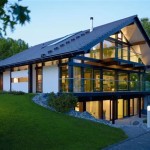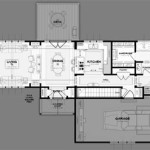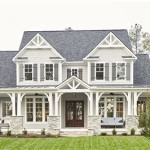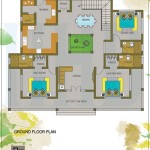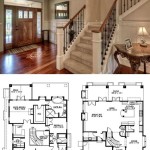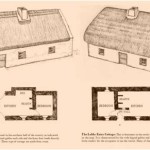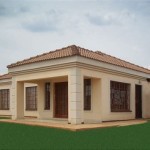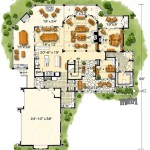Luxury Lakefront Home Plans: Designing a Waterfront Oasis
Lakefront living represents a pinnacle of luxury real estate, offering tranquility, scenic beauty, and recreational opportunities. A well-designed lakefront home maximizes these advantages, seamlessly blending indoor and outdoor spaces to create a harmonious living experience. Choosing the right home plan is crucial in achieving this ideal.
Several key considerations distinguish lakefront home plans from traditional designs. Maximizing views is paramount. Large windows, strategically placed balconies, and expansive decks are common features. Orientation towards the water is carefully planned to capture sunrise or sunset vistas and optimize natural light.
Outdoor living spaces are integral to the lakefront lifestyle. Covered patios, outdoor kitchens, and fire pits create comfortable areas for entertaining and relaxation. Direct access to the water via docks, boat slips, or beaches is another essential element to consider when evaluating plans.
Architectural styles for lakefront homes vary depending on personal preference and the surrounding landscape. Modern designs often feature clean lines, large glass expanses, and open floor plans. Traditional styles, such as Craftsman or Cape Cod, can evoke a classic, timeless feel. Rustic designs, incorporating natural materials like wood and stone, blend seamlessly with the natural environment.
Functionality is as important as aesthetics. The layout should facilitate easy movement between indoor and outdoor spaces. Mudrooms or designated entryways become essential for managing wet clothes and gear after water activities. Ample storage for boats, kayaks, and other recreational equipment should be incorporated into the design.
Sustainability is an increasingly important factor in lakefront home design. Minimizing environmental impact can be achieved through various methods. Utilizing sustainable building materials, incorporating energy-efficient appliances, and designing for natural ventilation and lighting are some examples. Rainwater harvesting and greywater recycling systems can further enhance sustainability.
Local regulations and building codes play a significant role in the design process. Setback requirements from the waterline, restrictions on dock construction, and environmental protection guidelines must be adhered to. Working with an architect experienced in lakefront construction ensures compliance with these regulations.
Budget considerations are crucial when embarking on a lakefront home project. The cost of waterfront property is typically higher than inland lots. Construction costs can also be elevated due to specialized foundation requirements and the need for weather-resistant materials. Establishing a realistic budget early in the planning stages helps avoid unexpected expenses.
The size and layout of the home should reflect the intended usage. A vacation home might prioritize open, communal spaces for entertaining, while a primary residence requires more private areas and functional spaces for daily living. Consider the number of bedrooms, bathrooms, and the need for specialized rooms like a home office or gym.
Accessibility is another important consideration. Incorporating features like ramps, wider doorways, and adaptable bathrooms ensures the home remains comfortable and usable for all occupants throughout various life stages. This proactive approach to design enhances long-term functionality and value.
Choosing the right architect and builder is essential for a successful lakefront project. Seek professionals with experience in waterfront construction and a portfolio showcasing similar projects. Clear communication and collaboration throughout the design and build process are vital for achieving the desired outcome.
Proper site analysis is critical before finalizing any plans. Understanding the topography, soil conditions, and prevailing winds helps inform design decisions. This analysis also identifies potential challenges, such as erosion control or drainage issues, allowing for proactive mitigation strategies.
Maintenance and upkeep of a lakefront property require special attention. Exposure to the elements necessitates the use of durable, weather-resistant materials. Regular inspections and preventative maintenance are crucial to protect the investment and ensure the longevity of the home.
Landscaping plays a vital role in enhancing the beauty and functionality of a lakefront property. Native plantings are often preferred for their adaptability to the local climate and their contribution to a healthy ecosystem. Erosion control measures, such as retaining walls or vegetated buffers, protect the shoreline and maintain water quality.
Integrating smart home technology offers enhanced convenience and security for lakefront properties. Remote monitoring systems, automated lighting, and security cameras provide peace of mind, particularly for vacation homes. Energy management systems can optimize resource consumption and reduce utility costs.
Ultimately, a well-designed lakefront home provides a sanctuary that seamlessly connects occupants with the natural beauty of the surrounding environment. Careful planning, attention to detail, and collaboration with experienced professionals are key to realizing this vision.

Luxury Lakehouse 9046 4 Bedrooms And 5 Baths The House Designers

Luxury Lake Retreat Architectural Designs House Plan 26600gg Rustic Exterior New York By Houzz

Lake House Plans Specializing In Home Floor

Luxury Lake Retreat Architectural Designs House Plan 26600gg Rustic Exterior New York By Houzz Au
Modern Lake House Plans Blog Eplans Com

Lake House Plans With Big Curb Appeal Houseplans Blog Com

Luxury Lake Retreat Architectural Designs House Plan 26600gg Rustic Exterior New York By Houzz Au

Luxury Lake Retreat Architectural Designs House Plan 26600gg Rustic Exterior New York By Houzz

Custom Lake House Plans By Stephen Davis Home Designs Norris Tn

Rustic Luxury House Plan Craftsman Style 5 Bedrm Bath

